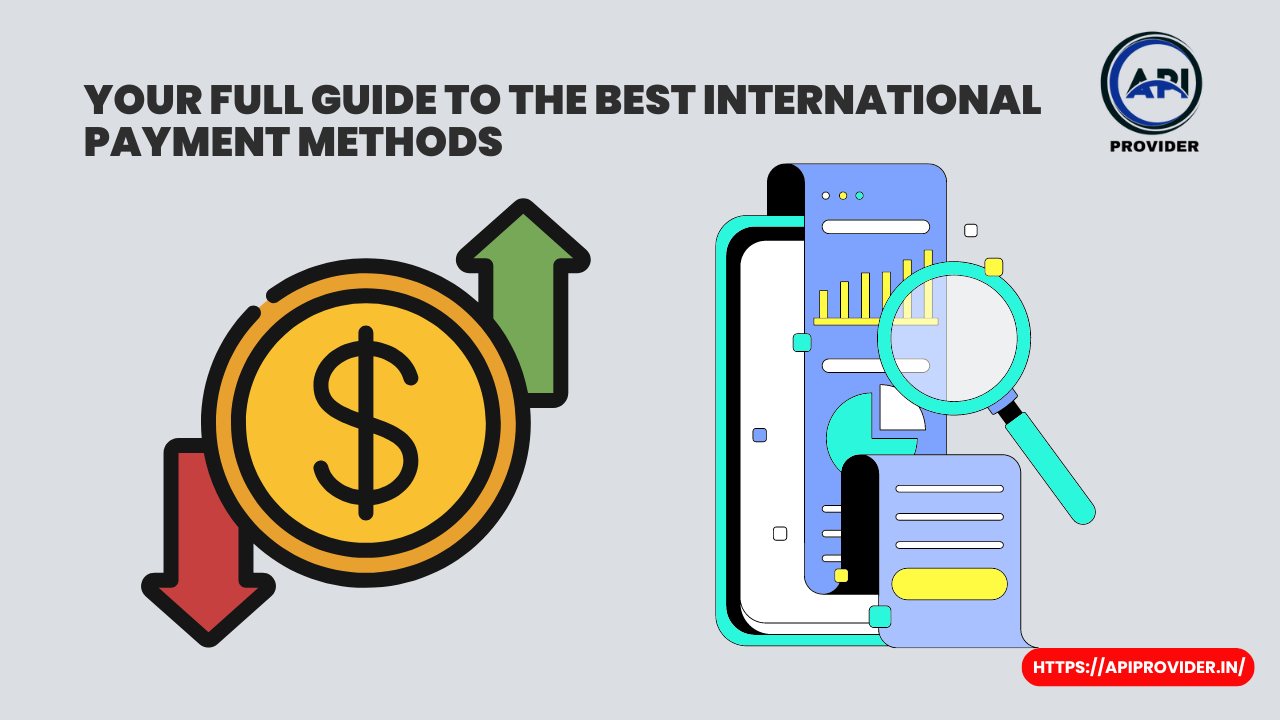Your Full Guide to the Best International Payment Methods: In an increasingly globalized world, transferring money internationally has become a common necessity for individuals and businesses alike. Whether you’re sending money to family, paying for goods and services, or handling international business transactions, choosing the right payment method is crucial. This guide will walk you through the best international payment methods, helping you make informed decisions to ensure smooth, secure, and cost-effective transactions.

Why Choosing the Right Payment Method Matters
Selecting the appropriate international payment method is essential for several reasons:
-
- Cost Efficiency: Different methods come with varying fees and exchange rates.
- Speed: Transfer times can vary significantly.
- Security: Ensuring your money reaches the intended recipient safely.
- Convenience: Ease of use and accessibility of the payment method.
Read More…
Best Payment Gateway for Small Businesses in India: Focusing on the Best QR Code Service Provider
Key Factors to Consider
Before choosing a payment method, consider the following:
- Transfer Fees: Understand the costs involved in the transaction.
- Exchange Rates: Look for competitive rates to get the best value for your money.
- Transfer Speed: Consider how quickly the funds need to reach the recipient.
- Security Measures: Ensure the method provides adequate protection against fraud.
Popular International Payment Methods
1. Bank Transfers
Bank transfers are a traditional and secure way to send money internationally. They involve transferring funds from one bank account to another.
Pros:
- High security
- Direct transfers to bank accounts
Cons:
- Higher fees
- Slower transfer times
2. Online Money Transfer Services
Services like Wise (formerly TransferWise), PayPal, and Revolut offer convenient and often cheaper ways to send money abroad.
Pros:
- Competitive exchange rates
- Faster transfers
Cons:
- Service fees vary
- Limited to certain countries
3. Credit and Debit Cards
Using credit or debit cards for international payments is convenient, especially for online purchases.
Pros:
- Easy to use
- Widely accepted
Cons:
- Higher fees and interest rates
- Potential currency conversion fees
4. Digital Wallets
Digital wallets like Apple Pay, Google Pay, and Samsung Pay allow for seamless international payments through smartphones.
Pros:
- Convenience
- Quick transactions
Cons:
- Requires compatible devices
- Service fees may apply
5. Wire Transfers
Wire transfers through services like Western Union and MoneyGram are fast and reliable for sending money globally.
Pros:
- Fast transfers
- Suitable for large amounts
Cons:
- High fees
- Exchange rate margins
6. Cryptocurrency
Cryptocurrencies like Bitcoin and Ethereum offer a modern way to make international payments without relying on traditional banking systems.
Pros:
- Lower fees
- Decentralized transactions
Cons:
- Volatile exchange rates
- Regulatory issues
Table: Comparison of International Payment Methods
| Payment Method | Speed | Cost | Best For |
|---|---|---|---|
| Bank Transfers | 3-5 Business Days | High Fees | Secure, large transfers |
| Online Money Transfer Services | Same Day/Next Day | Competitive Fees | Quick, cost-effective transfers |
| Credit and Debit Cards | Immediate | High Fees | Online purchases |
| Digital Wallets | Immediate | Moderate Fees | Convenient, small transfers |
| Wire Transfers | Same Day | High Fees | Fast, large transfers |
| Cryptocurrency | Minutes to Hours | Low Fees | Tech-savvy users, lower costs |
How to Choose the Best Payment Method
1. Assess Your Needs
Determine the purpose of the transfer, the amount, and the urgency. This will help narrow down the most suitable methods.
2. Compare Costs
Look at the total cost, including transfer fees and exchange rates. Online comparison tools can be helpful.
3. Consider Security
Ensure the method you choose has robust security measures to protect your money.
4. Check Availability
Not all payment methods are available in every country or region. Verify that the chosen method works in your location and the recipient’s.
Tips for Successful International Payments
- Verify Recipient Details: Ensure all recipient information is accurate to avoid delays or lost funds.
- Keep Track of Fees: Be aware of all potential charges, including hidden fees.
- Use Reputable Providers: Choose established and well-reviewed services.
- Monitor Exchange Rates: Exchange rates can fluctuate, so consider timing your transfer for better rates.
- Maintain Records: Keep records of all transactions for reference and dispute resolution if needed.
Conclusion
Navigating the world of international payments can be complex, but understanding the various methods available can simplify the process. Whether you choose bank transfers, online services, digital wallets, or even cryptocurrency, each method has its advantages and drawbacks. By considering your specific needs, comparing costs, and ensuring security, you can select the best payment method for your international transactions.
FAQs
What are the cheapest ways to send money internationally?
Online money transfer services and cryptocurrency often offer lower fees compared to traditional bank transfers and wire services.
How long do international transfers take?
Transfer times vary by method: bank transfers typically take 3-5 business days, online services can be same day or next day, and wire transfers are usually completed within a day.
Are international money transfers safe?
Yes, if you use reputable and secure platforms. Always verify the service provider’s credentials and read user reviews.
Can I use my credit card for international payments?
Yes, credit cards can be used for international payments, especially for online purchases, but they may come with higher fees and interest rates.
What information do I need for an international bank transfer?
You typically need the recipient’s bank account number, bank name, SWIFT/BIC code, and sometimes the recipient’s address.
